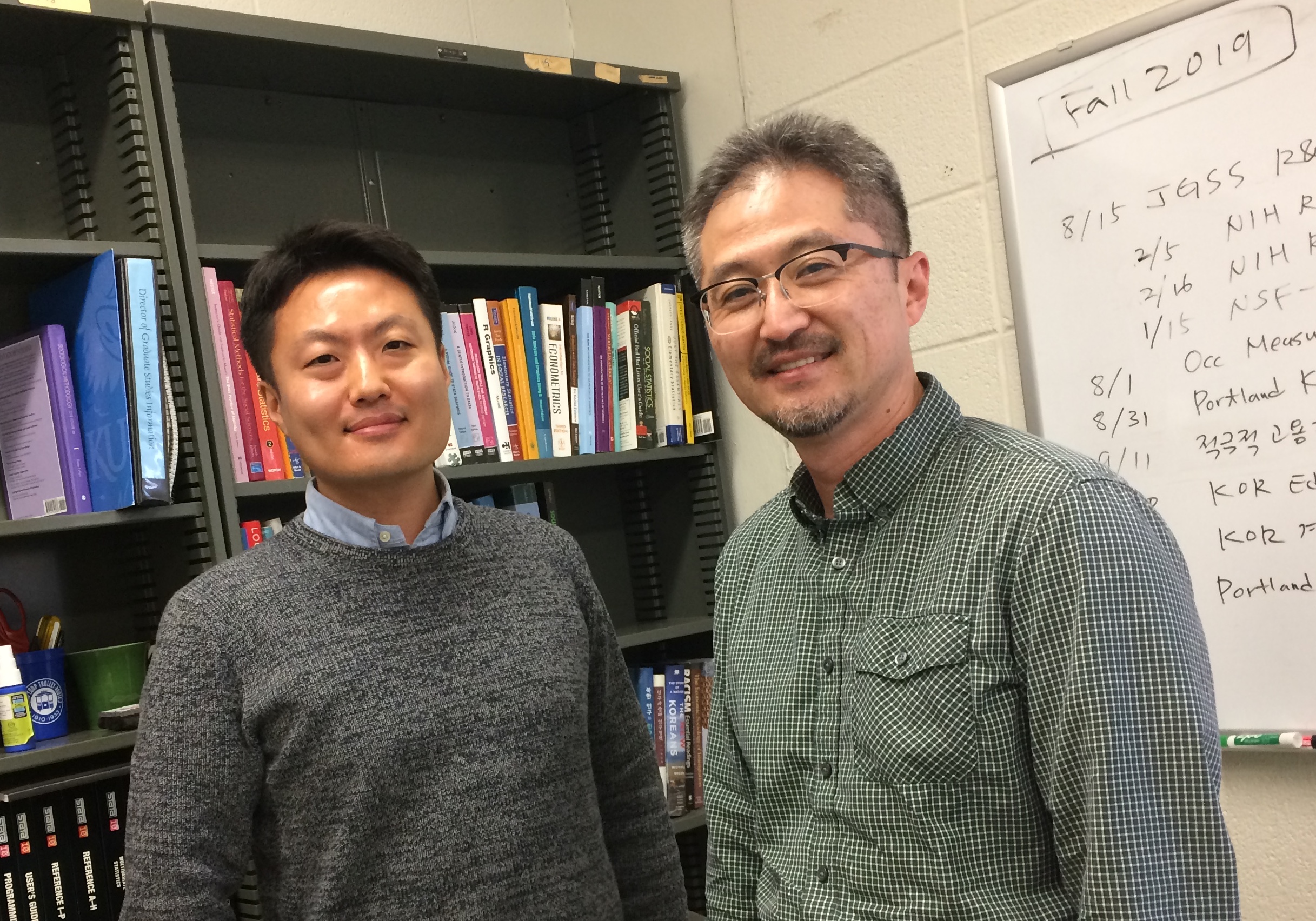Graduate students face more inequality than undergrads, study finds

LAWRENCE — College is “the great equalizer.”
Or at least that’s what we’ve always been told.
 But according to new research, the socioeconomic leveling students enjoy only applies to undergraduate degrees. Once advanced degrees become part of the equation, individuals experience the effects of classism in terms of employment opportunities and earnings.
But according to new research, the socioeconomic leveling students enjoy only applies to undergraduate degrees. Once advanced degrees become part of the equation, individuals experience the effects of classism in terms of employment opportunities and earnings.
“The belief in America is once you get into college, you are equal. And if you don’t go to college, intergenerational inequity will be reproduced,” said ChangHwan Kim, professor of sociology at the University of Kansas.
“We found that is not necessarily the case when you go to graduate school.”
Kim teamed with KU doctoral student Byeongdon Oh to write “Broken Promise of College? New Educational Sorting Mechanisms for Intergenerational Association in the 21st Century.” The article is published in Social Science Research.
“It shows how the higher education system reproduced inequality over generations,” said Oh, the lead author of the study.
Their results hinge on three educational sorting mechanisms involving advanced degree holders who come from high-SES (socioeconomic status) families:
1. They obtain expensive and financially rewarding degrees.
2. They major in lucrative fields of study such as law and medicine in graduate school.
3. They complete their education at a younger age.
“Students from a high-income family statistically choose liberal arts and improve their critical thinking and intellectual skills at undergraduate level. And they tend to switch their major at graduate level for very lucrative fields of studies, such as medicine or law,” said Oh, who earned an NSF Dissertation Improvement Grant in 2017 for this research.
Kim added, “Nowadays, college tuition is so hard. You invest so much money that you want return on the investment. If you come from a rich family, you pursue some interesting topic in college. Then you think of the labor market after that and go to graduate school.”
For their statistics, Kim and Oh utilized data from the 2010, 2013, 2015 and 2017 National Survey of College Graduates (NSCG). “Broken Promise” specifically surveys U.S. students, although they said these findings are echoed in other countries such as Germany and the U.K.
When studying the third mechanism, the pair noticed high-SES students often completed their graduate degrees earlier than low-SES students.
“In a statistical model we compare people’s income when they reach the same age,” Oh said. “Rich kids can immediately go to graduate school and finish their Ph.D., but other people might take more time, get a job, have a gap year, then come back to school. When we compare their salary at age 40, rich kids often have more than 10 years working experience, so they have more salary increase. While poor kids, even though they have a Ph.D., may only have five years of working.”
This explains the financial discrepancy: More years in the labor market means more income growth.
Their research applies to most graduate degrees, including an M.A., MFA and Ph.D. The only one that statistically showed little variation was the MBA.
“That’s because with an MBA, students typically have some work experience to begin with,” Kim said.
Both Kim and Oh are natives of Seoul, South Korea, although they met in Kansas.
Kim has taught at KU for 11 years, and his focus of study is the labor market. Oh is in his sixth year at KU, and his research concerns education and intergenerational mobility. The Social Science Research article represents a third of Oh’s dissertation. His other sections involve the effects of student funding sources on their educational outcomes and how student loans are repaid after graduation.
“As a sociologist, we study society. But this is also about ourselves,” Kim said of the motivation behind their latest study.
Oh said, “Previous studies suggested that we can overcome social inequality if we have more education. But many graduate students know there’s a huge inequality in our group. So there is a gap between academic knowledge and public perception. I want to fill those gaps through this research.”
Top Photo: iStock